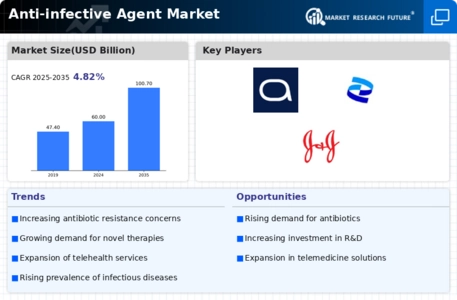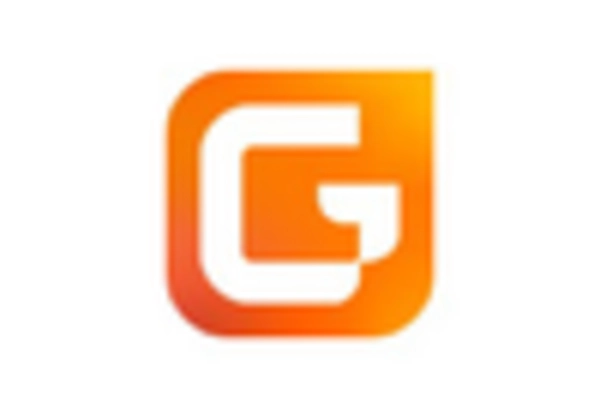Rising Incidence of Infectious Diseases
The increasing prevalence of infectious diseases is a primary driver for the Anti-infective Agent Market. As populations grow and urbanization expands, the risk of outbreaks rises, necessitating effective anti-infective agents. According to recent data, the incidence of infectious diseases has surged, with respiratory infections and gastrointestinal diseases leading the charge. This trend compels healthcare systems to invest in anti-infective agents, thereby propelling market growth. The demand for innovative treatments and preventive measures is likely to escalate, as healthcare providers seek to mitigate the impact of these diseases. Consequently, pharmaceutical companies are focusing on developing new anti-infective agents to address this urgent need, indicating a robust market potential.
Regulatory Support for New Drug Approvals
Regulatory bodies are increasingly providing support for the approval of new anti-infective agents, which is a significant driver for the Anti-infective Agent Market. Initiatives aimed at expediting the review process for novel therapies are encouraging pharmaceutical companies to invest in research and development. For instance, programs that offer fast-track designations and priority review vouchers are incentivizing the development of urgently needed anti-infective agents. This regulatory environment fosters innovation and encourages the introduction of new treatments to the market. As a result, the industry is likely to experience a wave of new products that address unmet medical needs, thereby enhancing market growth.
Growing Awareness of Antibiotic Stewardship
The increasing awareness surrounding antibiotic stewardship is shaping the Anti-infective Agent Market. Healthcare professionals and organizations are recognizing the importance of responsible antibiotic use to combat resistance. This awareness is driving the demand for alternative anti-infective agents, including those derived from natural sources and novel synthetic compounds. As a result, pharmaceutical companies are investing in research and development to create agents that align with stewardship principles. The market is likely to see a shift towards agents that are effective against resistant strains while minimizing the risk of further resistance development. This evolving landscape indicates a critical need for innovative solutions within the anti-infective sector.
Rising Investment in Healthcare Infrastructure
The increasing investment in healthcare infrastructure is positively impacting the Anti-infective Agent Market. Governments and private entities are allocating substantial resources to enhance healthcare facilities, particularly in developing regions. This investment is aimed at improving access to essential medicines, including anti-infective agents. As healthcare systems expand and modernize, the demand for effective treatments is expected to rise. Moreover, improved healthcare infrastructure facilitates better disease surveillance and response capabilities, further driving the need for innovative anti-infective solutions. This trend suggests a favorable environment for market growth, as enhanced infrastructure supports the distribution and accessibility of anti-infective agents.
Technological Advancements in Drug Development
Technological innovations in drug development are significantly influencing the Anti-infective Agent Market. The advent of advanced biotechnological methods, such as CRISPR and high-throughput screening, has streamlined the discovery and development of new anti-infective agents. These technologies enable researchers to identify potential drug candidates more efficiently, reducing the time and cost associated with bringing new treatments to market. Furthermore, the integration of artificial intelligence in drug design is enhancing the precision of targeting pathogens. As a result, the market is witnessing a surge in novel anti-infective agents that are more effective and have fewer side effects. This trend suggests a promising future for the industry, as the pace of innovation continues to accelerate.


















Leave a Comment